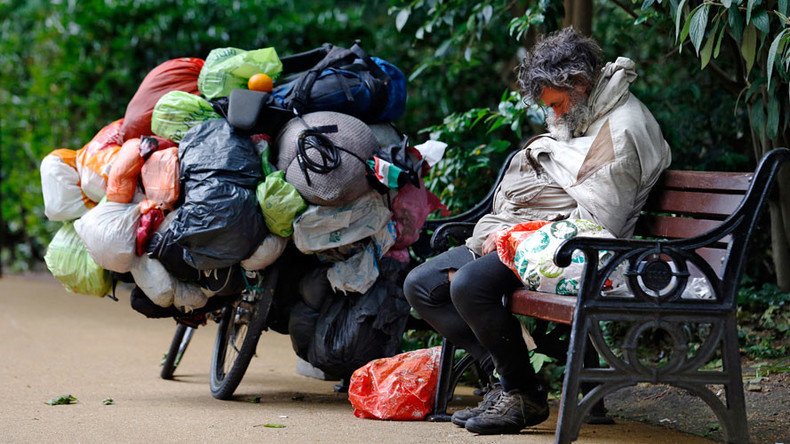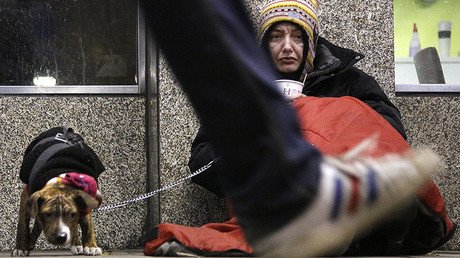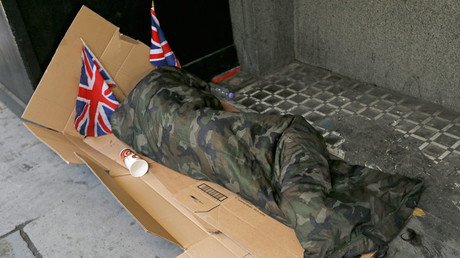‘Hidden crisis’: Extent of homelessness in UK countryside ‘underestimated’

People are sleeping rough in parked cars and barns in the countryside because the stigma attached to homelessness in rural areas is “much stronger” than in cities, a new report says.
According to a study by the Institute for Public Policy Research (IPPR) think tank, the “hidden crisis” of homeless people in England’s countryside is being “underestimated” as people bed down away from the public eye in places like parked cars, barns, outhouses and tents.
“Homelessness, traditionally depicted as an urban street phenomenon, is notably absent in people’s understanding of rural life,” the report said.
“The stigma of being visibly homeless in rural areas can be much stronger than in urban areas and difficulties accessing local authority services can mean households remain uncounted in official records.”
The report found that between 2010 and 2016, cases of homelessness increased by a staggering 32 percent in mainly rural areas, while they jumped by 52 percent in largely rural ones.
“Given the likelihood that for every rough sleeper recorded, there will be a considerable number of hidden homeless ... the rise should not be dismissed,” the report said.
IPPR research fellow Charlotte Snelling, who authored the ‘Right To Home? Rethinking homelessness in rural communities’ report, said that despite the lack of research, homelessness in rural areas still existed.
“There is nothing really out there about it,” she said.
“It isn’t really talked about and it’s not very visible. But we found that even though you don’t actually see it in the same way as homelessness in cities, it is actually quite prevalent.”
The report also said that the impact of homelessness was graver on people in rural areas because of the difficulty in accessing support.
“Given the difficulties in accessing services and alternative accommodation, the impact could be even more significant for households in rural settings,” the report concluded.
The report called on the government to introduce affordable housing for people seeking to live in the countryside, as well as a new national homelessness strategy which includes an assessment of the nature and extent of the crisis in the countryside.
It also recommended that the government’s strategy include rural-specific guidance on how to prevent and tackle homelessness.
“Rural homelessness often goes undetected but that doesn’t mean it isn’t happening and unless you tackle the difficulties in delivering services in rural areas and finding affordable homes, it will continue to be a problem,” said Snelling.














